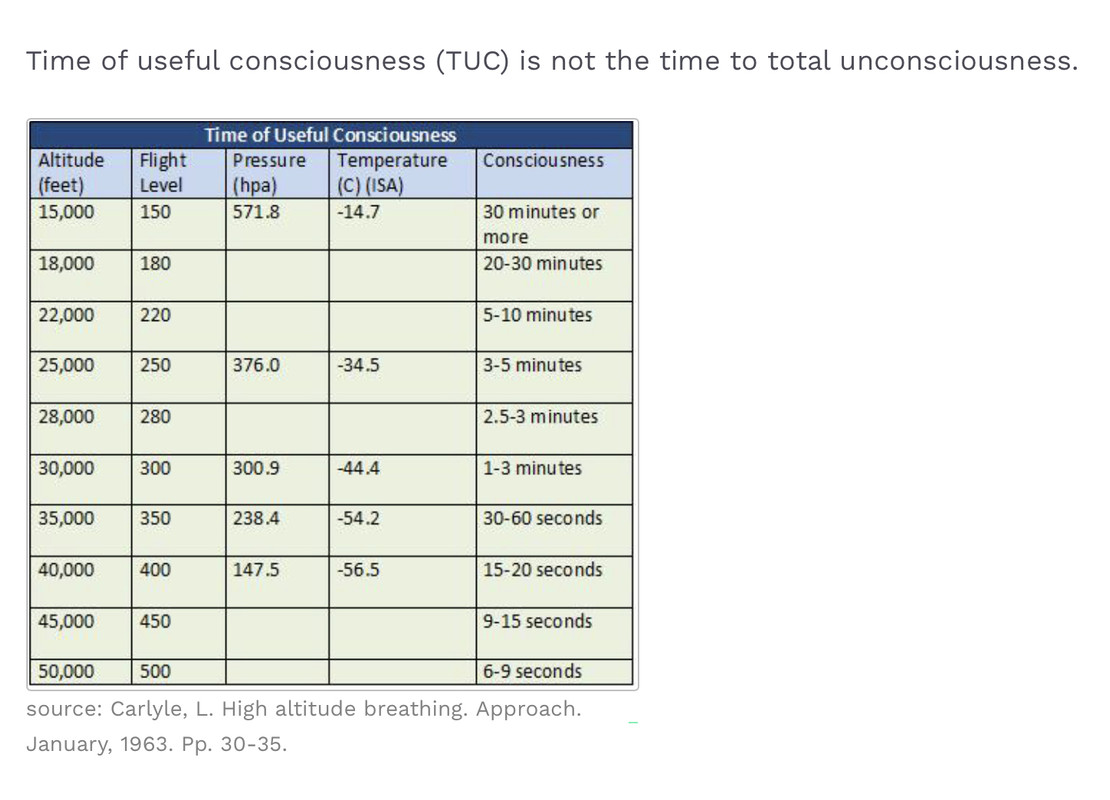Page 1 2
Go  | New  | Find  | Notify  | Tools  | Reply  |  |
Down the Rabbit Hole |
Very cool coloradohunter44. High enough to realize the earth is flat after all. Diligentia, Vis, Celeritas "People sleep peaceably in their beds at night only because rough men stand ready to do violence on their behalf." -- George Orwell | |||
|
| Member |
The Payne Stewart mishap is well known and has been dissected repeatedly. When I flew the Lear regularly, it was part of every ground school, and that incident has been part of many other ground schools. The early lears had a different requirement for the emergency pressurization procedures from later Lears, including diverting the emergency pressurization from the exterior windshield defog to interior. Without that, emergency pressurization would not occur. A common practice in the Lear, and in many turbojet aircraft, is to take off with the bleed air off, and turn it on in flight. If that's not turned on, the aircraft will not pressurize. The Lear in the Payne Stewart crash was flown by a pilot with very little experience with that particular emergency pressurization system. It was a Lear 25, but used the 20 series emergency pressurization system. It also was known to have an oxygen leak, and like many lears, the oxygen was turned off between flights. The pilot was not seen to turn it on during the preflight walk around. The line personnel noted that they had not filled the oxygen system; it's unknown whether it was simply depleted, or turned off, but it's evident from the intercept by the F-16 that the windows were fogged, indicating persons breathing inside, to a point, and that loss of consciousness occurred. If you haven't heard hypoxia before or it's effects, the Kalitta 66 learjet incident is very well known and is frequently used in ground schools and training to illustrate hypoxia. You can hear the captain slurring and sounding drunk; he's hypoxic (insufficient oxygen), as a controller tries to get him down to a lower altitude. You can also hear the first officer toward the end come to and begin talking. It's hair-raising: https://youtu.be/_IqWal_EmBg with transcript: https://fearoflanding.com/acci...poxia-on-kalitta-66/
Correct; the time to put on the mask is 5 seconds, not seven, and that's a legal requirement. Where it becomes critical is a rapid depressurization or explosive depressurization. I've had both, including a structural failure (windshield blew out, taking some of the cockpit interior and instrument panel with it). There's a lot going on and there's shock value, pain, potential debilitating physiological damage from blown sinuses to ear drums to teeth, and at high altitudes, rapid gas expansion in every body cavity and in the blood, etc. Getting the mask on rapidly and going to emergency oxygen under pressure is critical and may take the whole five seconds. One may not have the five seconds. By FL410, the time of useful consciousness is 15-30 seconds at best, reduced even more by numerous factors from health to age to physical condition to the simple fact that at the moment of depressurization, the lungs instantly expell all the air...one may barely have the five seconds, and at FL510, maye not even that. Aircraft that are certified to flight at altitudes higher than FL410 are certified based not only on their physical capabilities, but on the capability of the oxygen mask system installed in the airplane. I've flown airplanes that were certified as a type design to higher altitudes, but we were restricted based on our scott halo masks instead of a more effective system like the EROS. | |||
|
| Member |
I flew the Lear 45 for just shy of 10 years. I'm still disappointed I never tried to get to 510. Highest I ever saw was just under 490, which is still pretty incredible considering. Being able to go to 450 or 470 with ease was a great benefit, my current ride tops out at 410 with most flights being in the mid to high 30's. I can't go over the weather anymore, but I can stand up and stretch so it's not all bad! Mongo only pawn in game of life... | |||
|
| Rumors of my death are greatly exaggerated  |
I'll post this since a ball park estimate must be verified apparently.  Either way, I don't care if I ever fly that high again. It was a great experience and I'm always in awe of what man made machines are capable of. "Someday I hope to be half the man my bird-dog thinks I am." looking forward to 4 years of TRUMP! | |||
|
| Member |
TUC is a sliding scale and varies with the individual and numerous factors. If you have a chance to do a chamber ride and visit your own hypoxic signs and symptoms and behaviors, and observe others in the same chamber, it can be eye opening. | |||
|
| The Ice Cream Man |
I know high altitude is pushed as a feature on private jets - is it more fuel efficient? Faster? Party trick? | |||
|
| Member |
Higher altitude gets you above weather; that's a big plus. To a point, the higher you go, you encounter colder temperatures and a more efficient cruise, with a higher equivalent airspeed. Aircraft have an optimum altitude at which they'll be most efficient for a given weight and outside air temperature, which is adjusted for wind. Any higher than that by even small degrees, and efficiency is lost. Lower, some efficiency is lost, but not so much. An aircraft certified to a high altitude may or may not be able to get there, due to weight at a given time, but there are a lot of aircraft that aren't certified to go there. Having the certification gives options, so long as the weight and circumstance will permit a climb to those altitudes. FL510 offers a considerable penalty in the event of a pressurization loss. It's much worse to lose pressurization at FL510, than say, FL410; the time of useful consciousness (TUC) is much less, and the onset of conditions, including debilitating and life threatening conditions, and the severity of those conditions, carries a greater risk and penalty. And of course, there's bragging rights. If the aircraft is capable of high flight, it may encounter less traffic and enable direct legs, instead of being routed across a series of waypoints, which can reduce trip time, and it may be able to avoid stronger headwinds, especially on westbound flights. On older turbojet aircraft, often even on short flights the trip profile was a climb all the way to a cruising altitude, then a descent back down, with little or no time spent in level flight; still more efficient than cruising at a lower altitude. We did that in the 20 series Lears and the Sabreliner, etc. It can be quieter at higher altitudes, too; the air is less dense, and there's not as much cabin noise from the slipstream outside the aircraft. In the Piaggio Avanti, it was quite enough at 41,000' that we could have a normal conversation in the cockpit and be heard by people in the back of the cabin. That's quiet. There's a lot less traffic at FL510, than FL410, and less traffic at FL410 than say, FL350. The higher one goes, there's often less traffic. | |||
|
Member |
A memorable flight was just Hillsboro to Boeing Field in a Lear 35. We had just dropped our people off at HIO and returned to BFI without buying any gas. I can't remember exactly how high we got, but we climed empty and very little gas,,,,,,,,,something like 410............Then back to idle. It was fun!! This was fun too!!  | |||
|
| Member |
Is the response to control surface changes much different at FL510 than at much lower levels? | |||
|
| Powered by Social Strata | Page 1 2 |
| Please Wait. Your request is being processed... |
|
© SIGforum 2025